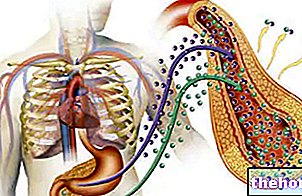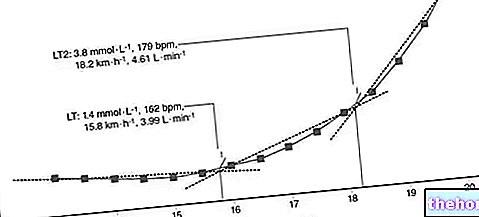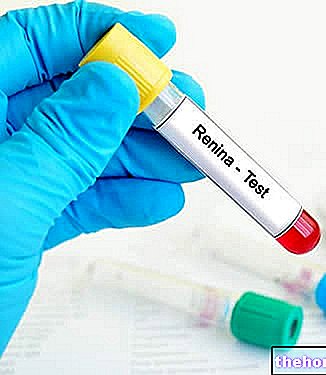Calculation of ideal LDL cholesterol values
Currently, in Italy, the overall weight of cardiovascular diseases on total deaths is close to 50%. For this reason, for many years now, the attention of an impressive number of researchers has focused on the risk factors involved in the development of atherosclerotic disease, as the main cause of deaths from cardiovascular accidents.
Cholesterol values have long represented the reference standard for assessing this type of risk. Simple to measure and cheap - but now considered superficial and not very significant - total cholesterol is only one of the many predisposing factors, such as hypertension, diabetes mellitus, cigarette smoking, obesity, hypertriglyceridemia, familiarity for such pathologies and physical inactivity. This is the picture that emerges from the latest studies in the sector, which have acquired over time greater sensitivity, specificity and a critical spirit. For some years now we have therefore begun to speak with increasing insistence of metabolic syndrome, homocysteine, hyperuricemia, aggregability platelet, apolipoproteins [Lp (A1) and Lp (B)], free radicals, proinflammatory factors (especially the C reactive protein or PCR), nitric oxide and many other "cardiovascular risk thermometers".

At this point it is legitimate to wonder about the opportunity to retire or not the classic monitoring of cholesterol values. Even if the answer to this question, of course, is negative, a conscientious doctor should refer his patients, especially those considered at risk. , towards much more in-depth examinations.
Men> 39
Women> 45
Men 35-39
Women 40-45
Men <35
Women <40
(*) The reference ranges vary in relation to the characteristics of the patients; in addition to age and sex, all the aforementioned risk factors must be considered, such as the presence of cardiovascular diseases, familiarity with this type of disorder, obesity, smoking habits, etc. In these latter cases, cholesterol levels and desirable triglycerides are clearly lower than those reported in the table.
(**) The HDL and total cholesterol values are also used to calculate a very important parameter, called the risk index, which represents a valid and statistically significant tool for assessing the patient's cardiovascular risk.
DESIRABLE RISK INDEX: Total cholesterol / HDL less than 5 for men, less than 4.5 for women.
According to the recent guidelines, the total cholesterol values are not significantly correlated with the quantification of cardiovascular risk. It is therefore better to avoid going crazy to bring the total cholesterol threshold below 200 mg / dL and instead focus on improving the good fraction or HDL, on strengthening the immune defenses and on the consumption of antioxidants and foods with anti-inflammatory action. Blue fish, olive oil, walnuts and linseed oil (but without exaggerating the quantities), green tea, probiotics, prebiotics, fruits, vegetables and whole foods, represent some of the best allies against cholesterol ... without forgetting the practice of a regular And specific physical activity (which is one of the best methods to increase the values of the HDL fraction).
The benefits of regular sports exercise, associated with a healthy and balanced diet, are also the best way to strengthen the body's immune defenses. All this could also have a protective role against cardiovascular risk; it has in fact been seen that some infectious agents, such as Helicobacter pylori, la Chlamidia pneumoniae and various viruses, including Cytomegalovirus, could be involved in the pathogenesis of atherosclerosis.
Caloric moderation and the sobriety of the diet represent another key element in the control of cardiovascular risk. A few extra pounds of fat, not to mention too many glasses or smoking, would in fact negate the positive results obtained on the food front.
Among the new emerging risk factors, one of the most important for evaluating cardiovascular risk - always through a simple blood test - is homocysteine, a sulfur amino acid that originates from the metabolism of methionine (another amino acid commonly found in animal foods) Compared with an adult daily requirement estimated at about one gram of methionine, the average introduction of the western population is more or less double.
Plasma homocysteine values higher than 12 mmol / l increase the cardiovascular risk.
It is important to note that, just as a family hypercholesterolemia can be kept under control with the generous consumption of fish, whole foods, fruit, vegetables and ... see: diet for cholesterol; Hyperhomocysteinemia can be controlled by consuming adequate amounts of folic acid (vitamin present in raw green leafy vegetables, less in cooked ones), vitamin B6 and vitamin B12 (contained mainly in foods of animal origin). Conversely, low levels of these micronutrients can aggravate the risks associated with this condition.
To reduce the number of cardiovascular events, it is therefore necessary to associate the evaluation of additional risk factors with the classic monitoring of cholesterol values. Even more important is the commitment on the dietary and behavioral front, which provides for the involvement of the population through information campaigns aimed at increasing sensitivity towards these issues.
Watch the video
- Watch the video on youtube




























